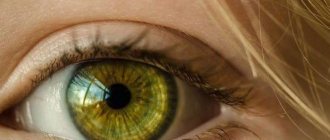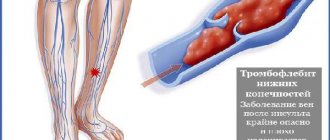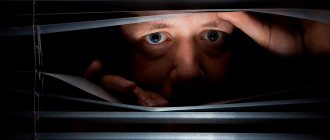In our age of overabundance of information, stress and crazy speeds, the problem of mental health, or more precisely, ill-health, is becoming almost the most important.
As you know, mental health, the same “healthy spirit” that ancient healers loved to talk about, is an integral component of health in general. Alas, the features of modern life make us extremely vulnerable to various mental disorders. And the disease does not distinguish whether the person in front of it is young or old, man or woman.
In terms of prevalence, mental health disorders are now among the leaders after cardiovascular diseases and cancer. According to WHO, more than 560 million people on the planet already suffer from various mental illnesses. And almost every second person is in danger of contracting a mental illness during their lifetime.
Very often, serious psychoneurological diseases such as neurosis and psychosis .
1 Diagnosis and treatment of neurosis
2 Diagnosis and treatment of neurosis
3 Diagnosis and treatment of neurosis
What lies behind the terms neurosis and psychosis?
We are so used to throwing around the words “hysterical”, “neurasthenic”, “psychopath” that we often forget that we use medical terms as curses or even ridicule. Meanwhile, there is nothing funny in these words.
Neurosis
Neurosis can be briefly described as follows:
- This is nervous exhaustion, a long-term chronic disorder that can develop in a person against the background of stress or a traumatic event.
- The personality of a patient suffering from neurosis usually does not undergo major changes. The person maintains a critical attitude towards the disease; he can control his behavior.
- As a rule, neurosis is manifested by vegetative, somatic and affective disorders.
- This is a reversible (curable) disease.
The most common types of this disease are:
- neurasthenia (asthenic neurosis, fatigue syndrome);
- hysteria (hysterical neurosis);
- various phobias (fears, panic attacks) and obsessive states (obsessive neurosis).
One of the main reasons for the formation of neurosis is stress in the broadest sense of the word, be it a childhood trauma, an unfavorable climate in the family, a crisis at work, nervous strain, interpersonal conflict or emotional shock.
According to medical statistics, the state of neurosis is familiar firsthand to 10-20% of the population of our planet, and approximately 5% of the world's inhabitants suffer from various types of psychosis.
Psychosis
Speaking about psychosis, it is necessary to note the following:
- This is a mental disorder characterized by inappropriate human behavior and an atypical reaction to events and phenomena.
- It manifests itself as mental disorders, in particular, disturbances in the perception of reality (hallucinations, delusions).
- It develops unnoticed by the patient and may be a consequence of pathologies of the endocrine and nervous systems.
- Capable of completely changing the patient's personality.
- This is a difficult to cure disease.
Psychoses according to their origin are usually divided into:
- Endogenous , that is, associated with internal causes (somatic diseases, hereditary mental disorders, age);
- Exoorganic , caused by external factors (infections, intoxication, etc.) or associated directly with a violation of the structure of the brain (trauma, hemorrhage, neoplasms, etc.).
The first group includes:
- affective insanity;
- senile (senile);
- affective;
- schizophrenic;
- epileptic;
- symptomatic psychosis, etc.
The exogenous group includes:
- reactive acute psychosis;
- intoxication;
- infectious;
- alcoholic psychosis, etc.
1 Biofeedback therapy in the treatment and diagnosis of psychosis
2 Biofeedback therapy in the treatment and diagnosis of psychosis
3 Biofeedback therapy in the treatment and diagnosis of psychosis
Difference between depressive neurosis and other neurotic disorders
First, let's find out what the differences between depression and neurosis are. Neurosis is a general concept for a whole group of psychogenic disorders, the appearance of which is caused by regular exposure to external stress factors. In the early stages of the disease, it is enough to eliminate these factors or change your attitude towards them for recovery to occur.
Depression is an affective disorder, that is, a mood disorder, which is characterized by a lack of ability to enjoy the positive phenomena of life, an unreasonable depressed state for a long time, a significant loss of strength and extreme fatigue. With depression, external factors are basically just a catalyst that triggers a serious illness formed by endogenous causes, including hereditary ones. The combination of a depressive and neurotic clinical picture is characteristic of depressive neurosis, but in a significantly softened version.
Despite apathy and a decrease in mental activity, the patient remains able to work, and in some circumstances is even absorbed in work; general lethargy has virtually no effect on the results of work. Apathy extends more to relationships in society - there is no desire to communicate or attend crowded meetings. The skills of habitual socialization themselves do not disappear, interest in them simply dries up.
There is no total depression; patients diagnosed with depressive neurosis do not lose self-control and are capable of adequate communication and assessment of what is happening. They do not have the painful feeling of a lack of feelings and a complete disappearance of emotions and interest in life. The sleep disturbances characteristic of ordinary depression in the form of early awakenings with the inability to resume sleep again are absent or only rarely appear. During the day, the condition may worsen slightly in the evening, while with a purely affective depressive disorder, on the contrary, it becomes a little easier in the evening. The presence of somato-vegetative disorders in this disease forces one to turn to general practitioners (most often therapists, neurologists) who treat common diseases, who can prescribe symptomatic treatment that does not correct the situation and prolongs the course of the disease.
As a differentiation from similar disorders, morning fatigue, characteristic of asthenic neurosis, is not accompanied by feelings of melancholy, restlessness and anxiety, as with depression, just as there is no extreme fixation on symptoms and the search for imaginary diseases, as is the case with hypochondria.
In general, the symptoms are much milder than the clinical picture of classical depression, in which the future is hopeless. Neurotic depression allows you to plan, see prospects and strive to achieve them, while bracketing the negativity of the existing unfavorable state of affairs. All these features and subtle differences can only be noticed by an experienced psychotherapist in order to differentiate depressive neurosis from other types of neurotic and affective disorders.
Signs of psychosis and neurosis
Symptoms of psychosis
Recognizing warning signs is sometimes not easy, but you should pay close attention to any changes that appear in the character and habits of a loved one.
Characteristic symptoms of psychosis are:
- decreased performance or febrile activity;
- mood swings;
- irritability, suspicion;
- desire for self-isolation;
- unexplained change of interests;
- sleep disturbances, decreased appetite;
- careless attitude towards one's appearance;
- increased vulnerability and other atypical reactions to events and phenomena;
- impaired coordination of movements;
- incoherent speech;
- hallucinations, delusions.
Symptoms of neurosis
It is quite difficult for a non-specialist to identify a nervous disorder. And yet the clinic of neurosis has characteristic features.
Neurosis may be indicated by:
- decreased cognitive abilities;
- depressed mood, tearfulness;
- self-doubt, low self-esteem;
- irritability, dissatisfaction;
- frequent changes of mood;
- obsessive thoughts;
- fixation on bad news and events;
- unmotivated anxiety states;
- poor appetite, disturbances in the gastrointestinal tract;/li>
- cardiovascular symptoms;
- insomnia and other sleep disorders;
- violations in the sexual sphere;
- increased sensitivity to noise, light, vibrations, etc.
1 Diagnosis and treatment of neurasthenia
2 Diagnosis and treatment of neurasthenia
3 Diagnosis and treatment of neurasthenia
Children's fears and facial tics are also symptoms of neurosis.
Very often in everyday life people confuse the concepts of “neurosis” and “neurasthenia”. Let us repeat once again: neurasthenia is a type of neurosis, one of its most common forms.
Characteristic symptoms of neurasthenia are:
- decreased intellectual abilities;
- dizziness, headaches (the so-called neurasthenic helmet);
- increased fatigue;
- sleep disorders;
- disruptions in the gastrointestinal tract;
- chest pain;
- mood swings;
- low self-esteem;
- decreased potency and libido.
Clinical picture, symptoms
Depressive neurosis in the manifestations of vegetative-somatic disorders practically repeats the symptoms of neurosis and depression in the initial stages of development. Against the background of a low mood, but while maintaining the usual ability to work for the sick person, at the initial stage of neurotic depression the following may be observed:
- decreased vital activity, apathy towards all areas of social relations;
- general lethargy, decreased speech, facial expression, motor, and mental activity;
- sleep disorders - long periods of falling asleep, frequent awakenings with anxious feelings, insomnia;
- weakness and weakness in the morning, general fatigue during the day;
- imbalance of the autonomic nervous system, expressed in cardiovascular manifestations - tachycardia, palpitations, fluctuations in blood pressure with the development of persistent hypotension, etc.;
- decreased appetite;
- dyspeptic disorders;
- disorders of the gastrointestinal tract, spastic colitis;
- periodic dizziness;
- turning to work from family and interpersonal troubles.
Treatment of neuroses and psychoses
Only a neurologist (psychoneurologist, psychotherapist, psychiatrist) who has undergone appropriate training and has sufficient practical experience in helping patients with neurological and mental disorders can conduct a competent diagnosis of the disease, identify its causes and offer adequate treatment.
Treatment of psychoses and neuroses (including treatment of neurasthenia) is, as a rule, a whole complex of measures that includes many stages.
So, a combination of the following methods helps to achieve a good result:
- drug therapy;
- phytotherapy;
- psychotherapy;
- hardware treatment;
- water procedures;
- reflexology;
- special gymnastics;
- therapeutic diet, etc.
A positive attitude, the right environment, a normal family environment, maintaining a healthy lifestyle, maintaining a work and rest schedule, and eliminating “stress-forming” factors (even changing your place of work or area of residence) are extremely important for recovery.
What anti-psychosis pills are used for treatment in Moscow
Treatment with medications, mainly antipsychotics, is considered one of the most effective ways to eliminate psychosis. In recent years, many medications have been developed that selectively act on the corresponding types of psychoses - they are successfully used in Moscow clinics. If psychosis is a consequence of intoxication, then, just as in the treatment of alcoholism, medications are used to cleanse the body.
Usually, in case of severe agitation, the doctor prescribes the neuroleptics triftazine and chlorpromazine. If the patient is in a delirious state, then stelazine and haloperidol help him. When drug treatment, the age, condition of the patient and the stage of the disease must be taken into account.
Positive results from taking medications are reinforced by a psychotherapeutic course of treatment. In addition, great importance is given to the social adaptation of patients with psychosis, as well as the rehabilitation of drug addicts after undergoing therapy sessions.
It is imperative to take into account that treating psychosis at home or with the help of alternative medicine is unacceptable and very dangerous. The patient should receive qualified medical care only in specialized medical institutions that effectively treat this disease and prevent its transition to a chronic condition.
Why you should visit a MedicCity neurologist
If you experience psychological discomfort and tension, feel trapped, and cannot relax even in your sleep, do not delay visiting a doctor. Delicately and professionally, our specialist will help you understand the causes of your condition and give all the necessary recommendations. Don't be left alone with your troubles!
We provide assistance for various neurological diseases, as well as disorders in the functioning of other organs and systems of the body. If necessary, you can get advice from another specialist - doctors from over 30 specialties conduct appointments at the clinic every day.
Depressive psychosis, causes
This psychotic state is a phase of a mental illness - bipolar affective disorder.
The opposite status is called manic. Depression as part of this pathology occurs over a longer period and with severe impairments. The outpatient format of therapy is recommended only in the recovery phase or for prevention during remission. Patients require hospital treatment based on the following factors :
- The behavior of sick people is often inappropriate. They can harm their health and be dangerous to others.
- To alleviate the condition and eliminate the manifestations of the disease, potent drugs are used that require constant monitoring of the patient.
- Patients often exhibit suicidal tendencies. Doctors can notice them in a timely manner only with constant monitoring.
Among the reasons leading to pathology, several of the most obvious stand out.
Depressive-psychotic abnormalities are detected against the background of:
- suffering mental trauma;
- development of an intense stressful situation, especially in its chronic course;
- tendency to melancholic experiences, despondency;
- pessimistic mood, excessive “soul-searching”;
- psychasthenic accentuation of personality;
- old age and the presence of serious illnesses;
- undergoing complicated childbirth;
- alcohol, drug and gaming addiction.
These factors can be combined, which significantly increases the possibility of developing pathology.
Hysterical neurosis
The clinical picture of hysteria is characterized by increased lability of emotions and the transition of the mental component to the somatoneurological one. This is the only form of neurosis when qualitative changes in consciousness are possible. Almost all symptoms of hysteria are protective for the patient, corresponding to a specific psychotraumatic situation. They bring a certain moral benefit to the individual, since they provide an opportunity to get rid of another difficult experience. Therefore, hysteria can be considered as a kind of protective phenomenon that occurs under the influence of a super-powerful stimulus.
Example: a mother received unexpected news about the tragic death of her son; while waiting for the body to be brought, she thought with horror that she would not be able to see him dead, and suddenly became blind; After a while, the hysterical blindness passed.
Emotional lability during hysteria manifests itself in a sharp change in emotions and their inconstancy. But, unlike neurasthenia, they are indicated by high intensity and duration. The patient, who a minute ago was crying bitterly and in deep despair, without much effort not only calms down, but also easily comes into a good mood. Such lability of emotions leads to instability in desires, intentions, behavior, likes and dislikes. In addition to emotional lability, a clear symptom of hysteria is easy suggestibility - both self-suggestion and the ability to be suggested by others.
The most striking reaction to a stimulus from the motor system will be a hysterical attack. Seizures do not occur when no one is near the patient, and are not accompanied by a sharp fall with bruises and injuries. Movement disorders have a pronounced neurotic character and coincide with the content of the patient’s experiences. He falls, chaotically swings his arms and legs, hits them on the floor, bends over, shouts out individual words. The seizure lasts from several minutes to hours. Unlike epileptic paroxysm, hysterical paroxysm is not accompanied by a clear violation of muscle tone, spasm of the sphincters with their relaxation and incontinence of urine and feces, the reaction of the pupils to light is preserved, and treatment is perceived adequately. After the attack, only a vague memory of it remains.
One type of hysteria is a disorder of consciousness under the influence of mental trauma. The perception of the surrounding reality is distorted. Behavior takes on childlike features, helplessness, and elements of fake dementia - pseudodementia. Some experience neurological symptoms: decreased sensitivity, trembling hands, hysterical deafness or muteness.
Significant strength and lability of emotions can sometimes cause a deviation of consciousness such as twilight stupefaction (hysterical delirium) and painful constriction (hysterical unconsciousness). The twilight state of hysteria usually demonstrates a pure type of painfully narrowed consciousness without stupor or other signs of its disturbance.
What doctors treat neuroses
Psychiatrists, psychotherapists and psychoneurologists play a leading role in the treatment of neuroses. Doctors of many specialties also take part in the treatment process: therapists, cardiologists, gastroenterologists, neurologists, etc.
Such a large list of specialists is explained by the need for accurate diagnosis while simultaneously excluding other pathologies. Quite often, neurosis is disguised as symptoms of neurocirculatory dystonia, insomnia (insomnia), migraine, vestibulopathy and many other diseases. To definitely confirm or refute a particular diagnosis, the participation of a specialized specialist is required.
Who is most likely to experience professional neuroses?
Some people endure life's adversities with steadfastness, while others are unsettled by literally every little thing. The risks of neurosis depend on two factors: the force of external pressure and individual predisposition.
A person is made predisposed to neurosis by such personality traits as a tendency to worry, dramatize situations, an increased level of responsibility, inflated demands on oneself and others, anxiety, and suspiciousness. Sometimes genetic predisposition comes to the fore.
Poor health, frequent and chronic diseases, and low immunity play a certain role.
Usually, living in conditions of chronic stress, a person predisposed to neurosis resists for some time, but inside him, as they say, “accumulates.” One day a serious traumatic event occurs, and defense mechanisms do not work. The trigger can be anything: dismissal, a strong scolding from management, an emergency at work, a deadline for a large project, an event in your personal life.








